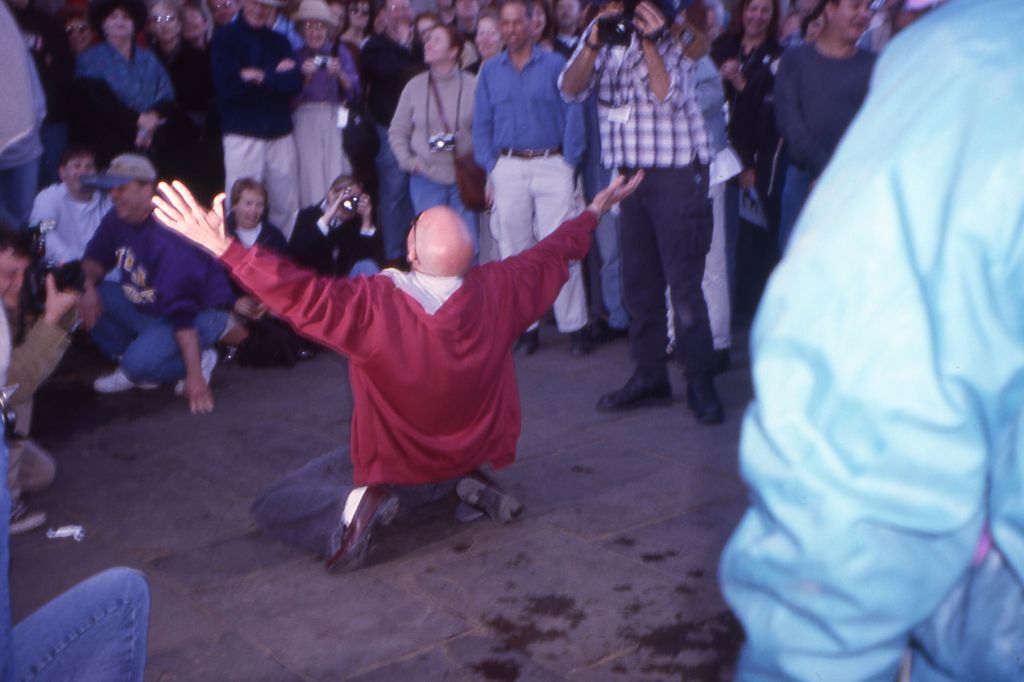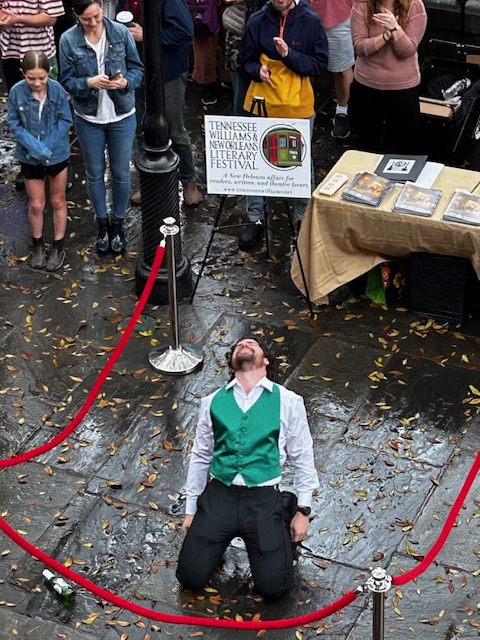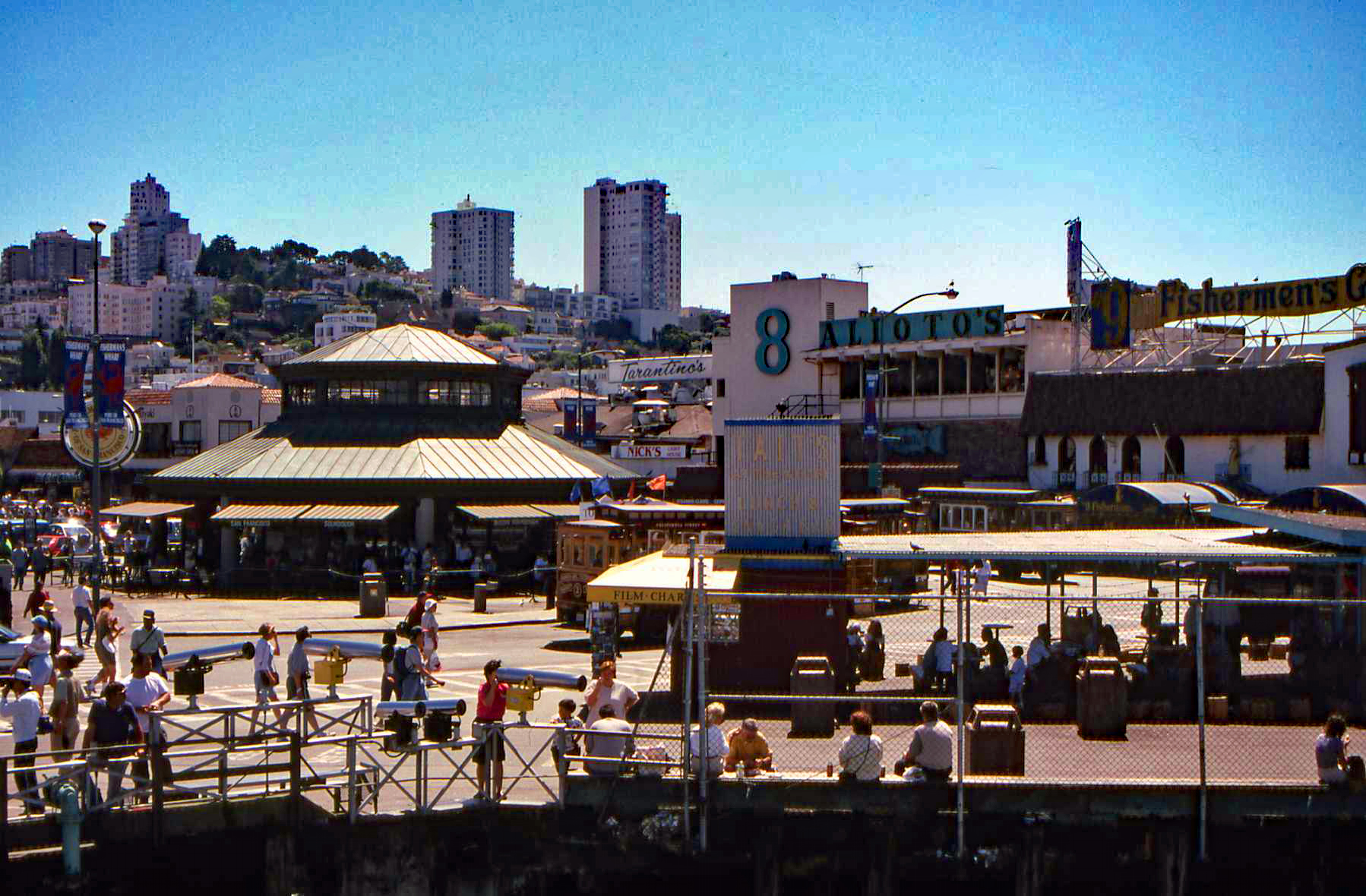In With a Shout.
One of the Apps on my computer offers what it calls Memories. It flags up a photo taken on the same date years before. A few weeks ago, the photograph was one taken some years back at the Tennessee Williams Literary Festival in New Orleans.
My photo was one taken at a very quirky part of that festival – the ‘Stella Shouting Contest’ – a homage to A Streetcar Named Desire and the character of Stanley Kowalski, the hero/antihero of the play.

The Stella Shouting Contest in New Orleans
“Stellllllaaaaa! Stellllllaaaaa!”
The cry reverberates around the French Quarter of New Orleans and the crowd jostling in the packed courtyard applauds. From the balcony above, Stella waves to the damp-haired man in the sweat-stained shirt below who blows kisses to the crowd as the next tee-shirted Stanley steps forward to chance his luck at outshouting the other participants.

For this is the Stella Shouting Contest, part of the Literary Festival, held for nearly 40 years in honour of New Orleans’ favourite playwright, Tennessee Williams. The Stella contest pays homage to his classic A Streetcar Named Desire and for the last three decades or so, the primal screams of wannabe Stanley Kowalskis have been echoing around the magnolia-laden French Quarter to mark the Festival.


A Streetcar Named Desire
“They told me to take a street-car named Desire, and transfer to one called Cemeteries, and ride six blocks and get off at Elysian Fields”, says Blanche when she arrives at the house in which her sister Stella lives with Stanley.
Williams used the title metaphorically: there was no street-car named Desire trundling along the tramlines to Stella’s house, but there was, and is, Elysian Fields Avenue, and the name is forever linked to the steamy tragedy of Stella, Stanley and Blanche.

Marlon Brando in Streetcar
Marlon Brando played Stanley in the original Broadway production, and in the 1951 film adaptation of the play, he set the standard for all future Stanleys. His despairing “Stellllaaaa” echoed around cinemas and lodged in the minds of filmgoers forever, when drunk, sweat-soaked and half-dressed, he stumbled onto the sidewalk and fell to his knees, bellowing for his wife, “Stellllaaaa, I want my baby down here” – probably the most famous line from any of Williams’ plays. Little did anyone guess then, that this angst-ridden howl would one day become a feature of one of the USA’s Literary Festivals.


What Happens During the Literary Festival
Events like the Stella Shouting Contest, theatre productions, in-depth writing workshops, and lectures from best-selling authors on everything from scene-setting to stereotypes in fiction attract attendees from all over the world. Giants from the world of literature and theatre mingle with would-be-playwrights and authors to offer advice, give talks and join in the celebrations, all overlain with that N’awlins easy charm.


What Happens in the Stanley Shouting Contest
The famous scene, and the scream, is replayed again and again by men who come to The Big Easy to test their screams against other men. Technically it’s a Stanley/Stella shouting contest as females can also take part, but as Stella didn’t yell “Stanley” it doesn’t resonate with the public in quite the same way so there are few entries on the Stella side.

Standing beneath the filagreed balconies of the houses around the green oasis of Jackson Square the contestants direct their howls of desire and angst at local actors attired as Stella and Blanche on a balcony above. Celebrity judges lounge on adjoining balconies, while festival go-ers, voodoo hustlers and tarot card readers jostle for positions from which to watch the fun.


One by one the contestants give it their best shot in the allotted three shouts in which they must portray Stanley’s despair, rage and emotion. They fall to their knees, tear their shirts – the iconic torn white tee-shirt is a given – and douse themselves with water to conjure up the image of Stanley’s sweat-soaked torso.
To whoops and cheers, six finalists are selected and they go on to compete, a few hours later, on the main stage of Le Petit Theatre, the venue for the Festival’s workshops, play readings and lectures. We, the onlookers and audience, troop in after them, by now having a favourite to encourage in the tension-filled finals.

On the stage at Le Petit, the Stanleys now scream with more gusto and histrionics, encouraged by their fans in the crowd. Hyped up – alcohol may play a part as well – cheering for their man and booing the opposition, the audience sounds as primal as Stanley.
All this for the grand prize of the Golden Stella Trophy, holidays in New Orleans, hampers of local goodies, and trips on Ole Miz, the muddy brown Mississippi.

Few Festivals have such a strong performance element as the Tennessee Williams Literary Festival – two full-length plays and several one-act plays of the master are usually staged alongside film screenings, tours of the French Quarter, book signings, and jazz evenings. All this plus work-shops and lectures from writers like David Simon, James Lee Burke, Richard Ford, Laura Lipman, and dozens of others. You’re bound to meet your favourite author there and for some reason, crime writers are particularly well represented.

New Orleans
The Big Easy still lives up to its motto of ‘Laissez les bon temps rouler’ – let the good times roll – and outside the theatre the city goes about its business, partying along Bourbon Street and entertaining the tourists in Jackson Square where the voodoo priestesses, hawkers of hats and beads, and groups of wild looking Cajun and Zydeco musicians straight from central casting come together in a gloriously chaotic, laid-back cocktail.
There are also city tours, swamp tours, plantation tours, and that old standby, shopping, and that for which New Orleans is best known – music – from trad jazz to funk, zydeco to gospel. While there you can take in a session with one of the city’s best bands, Jon Cleary and the Monster Gentlemen Band, who will take you on a jazz voyage like you’ve never had before.

So if you’re in the area next March and fancy your chances of being a ripped-shirt Stanley with a voice that could persuade Stella not to leave him, then go for it.
Tennessee Williams loved this mixture of the pious and the profane, the sinners and the saints – isn’t that what all his plays are about?

Factfile:
The 38th Annual Tennessee Williams/New Orleans Literary Festival took place this year between March 20th—24th. Next year’s dates not yet published. Sign-up for the Stella Shouting Contest will begin at 1.30 3 or 4 days prior to the opening.
The Tennessee Williams Literary Festival: 938 Lafayette Street, Suite 513, New Orleans, Louisiana 70113. Tel: 504 581 1144. info@tennesseewilliams.net
British Airways flies direct to New Orleans from £575 Return and also offers hotel bookings. Other airlines fly via Chicago – a good place for a stop-off.























 At the end of this line (at Hyde and Beach) is The Buena Vista Cafe, where the locals insist that Irish Coffee was born. Don’t believe it. I’m with the good folk of Shannon Airport who claim to have invented it many years ago to comfort passengers held up by fog in the days when Shannon was a mere stop-off point for the ‘planes to the USA. What makes me so sure is that I doubt if the rich cream you need for an Irish Coffee – and that you get at Shannon – would be served in the USA as it would be too calorie rich!
At the end of this line (at Hyde and Beach) is The Buena Vista Cafe, where the locals insist that Irish Coffee was born. Don’t believe it. I’m with the good folk of Shannon Airport who claim to have invented it many years ago to comfort passengers held up by fog in the days when Shannon was a mere stop-off point for the ‘planes to the USA. What makes me so sure is that I doubt if the rich cream you need for an Irish Coffee – and that you get at Shannon – would be served in the USA as it would be too calorie rich!

